ConvertKit and Mailerlite are two of the most popular email marketing tools out there. But, if you’re reading this, you probably aren’t sure which one is a better fit for you. In other words, which one can help you sell more consulting services?
In this post, we’ll talk about the features both these email marketing tools have to offer. The goal, of course, would be to help you pick the right option for your needs. Let’s first take a look at the features or qualities you should be mindful of while selecting an email marketing service for your consulting business.
What do Consultants Need from their Email Marketing Software?
Here are some features that consultants need from their email marketing software:
Other features you should keep an eye on:
ConvertKit vs. Mailerlite: A Comparison Review
Before we talk about how these two email marketing tools stack up against each other, let’s do a quick overview of both.
ConvertKit Overview
ConvertKit helps email marketers connect and “Convert” their audiences. Founded in 2013, the tool is one of the most popular ones out there. ConvertKit is a bit more geared toward content creators and influencers. Importantly, it offers everything you’d need to move your consulting business forward.
But, whether or not it’s better than Mailerlite is yet to be seen. (Related: ActiveCampaign vs. ConvertKit For Selling Digital Products)
Mailerlite Overview
Founded in 2010, just three years before ConvertKit, Mailerlite has over 1 million customers today. As the name suggests, Mailerlite is a simple and lightweight email marketing solution. This naturally makes it a good alternative to complex tools. However, there’s nothing “lite” about Mailerlite’s features. You get virtually everything you need to sell more consulting business with this tool.
But, is it better than ConvertKit? That’s yet to be seen. (Related: ActiveCampaign vs. Mailerlite: Which One is Best for Infopreneurs)
ConvertKit Features
With the overviews out of the way, let’s first take a look at ConvertKit’s features. Let's get started.
Interface and Ease of Use
After signing up for your ConvertKit account, you’ll notice that the dashboard doesn’t offer much. As you start using it, your campaign reports will show on the dashboard. And everything you need is right up there on ConvertKit’s navigation menu.

For instance, if you want to create a sequence, you can find the option under “Send”.

Automation
Automation is where ConvertKit stands out from the pack. You can access the tool’s automation features under “Automations” in the top menu.

As you can see, there are four ways to automate an email marketing campaign with ConvertKit.
ConvertKit’s “Visual Automations” feature can be a game-changer for your consulting business. It lets you create powerful automations visually.

You can either start an “Empty Automation”, or pick a ready-made one from the templates. Of course, a template would be a better option if you want to save time or aren’t sure what you’re supposed to do.
Visual Automation is simply a workflow with different triggers and rules that decide when someone enters the funnel.

As you can see, it’s simple yet powerful. You can essentially add three types of triggers to your ConvertKit workflows:
If it looks intimidating, don’t worry, every automation workflow seems like that in the beginning. Once you know how it works, you’ll be able to make it work for you easily.
Forms and Landing Pages
One of the most important things you need in an email marketing tool is the ability to create high-converting landing pages and forms.
Fortunately, ConvertKit doesn’t disappoint in this department either. Like any good software platform, it gives you tons of ready-made landing page templates to choose from. Moreover, ConvertKit’s landing page editor is one of the easiest to use out there.

The form builder is no different.

You can edit different sections of your form from the sidebar. To edit the text of individual sections, you’ll just need to click on them.
A/B Testing

A/B testing in email marketing is when you test different variations of the same email. The most commonly tested element is the subject line, but some tools let you test other variables as well.
With ConvertKit, you can only A/B test your subject lines. While creating a “Broadcast”, you’ll just have to click on the A/B icon to the right of your main subject line. You’ll then see another field where you can write your test subject line. ConvertKit will then test both variations.
Here’s how it does that:

Email subject lines are important because they are the bridge that connects your main message and your target audience. And of course, your email open rates mainly depend on how powerful your subject lines are.
Email Sequences and Broadcasts

An email sequence is exactly how it sounds: A sequence of emails sent out to subscribers to achieve a particular goal. You can use an email sequence to achieve a variety of goals, including:
These sequences are triggered whenever someone takes a particular action while interacting with your business. A broadcast, on the other hand, is a one-time email that’s sent in bulk to a group of people. You can use broadcasts to convey a one-time message to your audience, like a special announcement.
With ConvertKit, you can send your broadcasts to a specific segment of your audience. It also gives you the ability to schedule your broadcasts for a later time.
Integrations

If you’re using any other apps to grow your consulting business online, you’d want to integrate them into your new email marketing software.
The good thing is that ConvertKit comes with a lot of built-in integrations. Even if you don’t see a specific app on that list, you’ll most likely be able to integrate it through Zapier.
Marketing Analytics
ConvertKit does lack a bit in the reporting and analytics department. Although you do get a basic overview of your campaigns’ performances. For instance, you’ll know how your broadcasts have been working in terms of engagement.
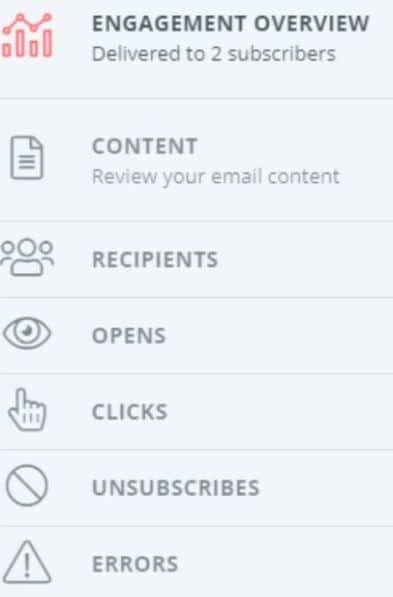
Mailerlite Features
Although Mailerlite might not be the most powerful email marketing tool, it’s definitely one of the top ones when it comes to ease of use and beginner-friendliness. Importantly, the features it comes with are more than enough to help you build your consulting business.
Here’s a quick look at the different features of Mailerlite.
Interface and Ease of Use
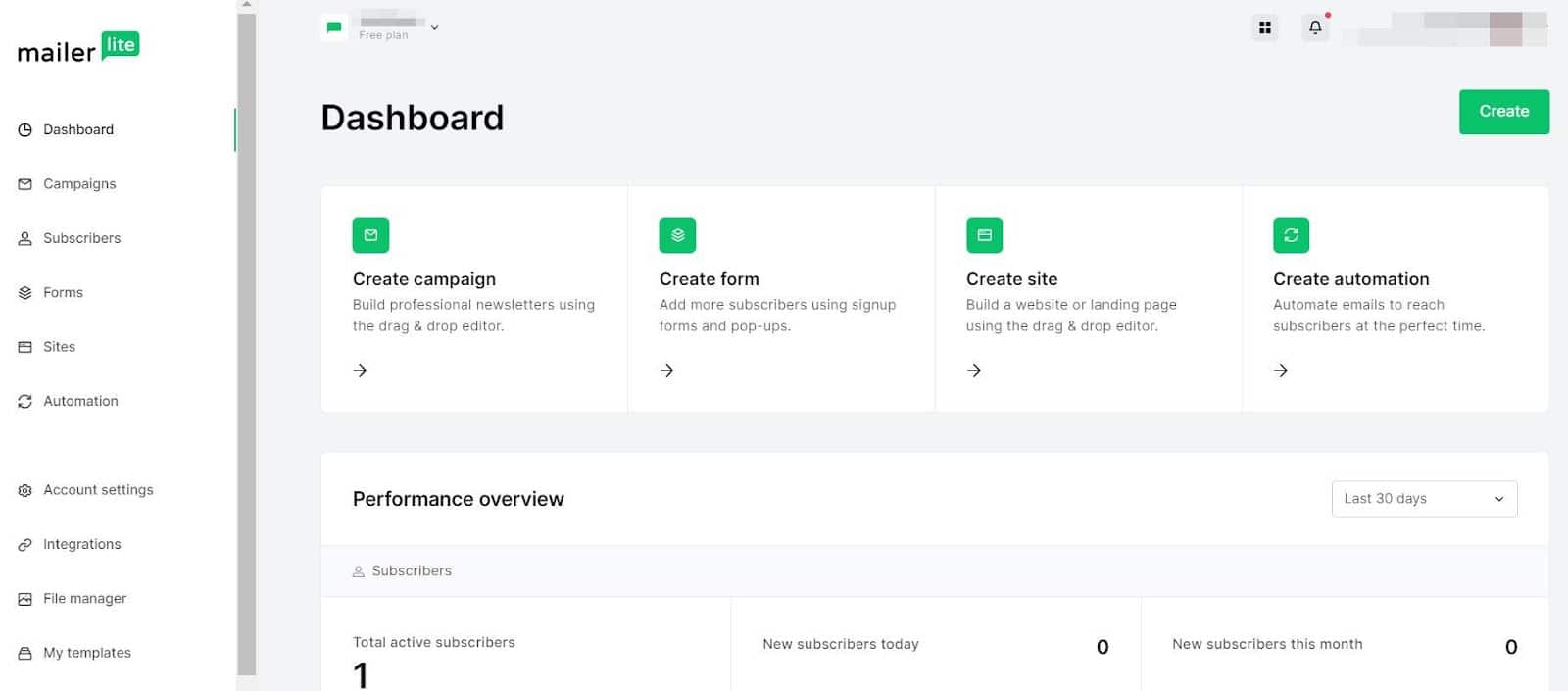
As mentioned before, Mailerlite is a simple tool with a simple dashboard. The dashboard has quite a few options to help you get started. For instance, you can start creating an email campaign right from your dashboard.
Of course, you can access all these features in the left menu as well. But, it helps to have the most important ones right in front of your eyes when you log into your software.
Segmentation
Like ConvertKit, Mailerlite also lets you segment your audience with ease (ConvertKit has this feature in “Sequences” and “Broadcasts”). You can manage your audience segments in the “Subscribers” tab in the left menu.
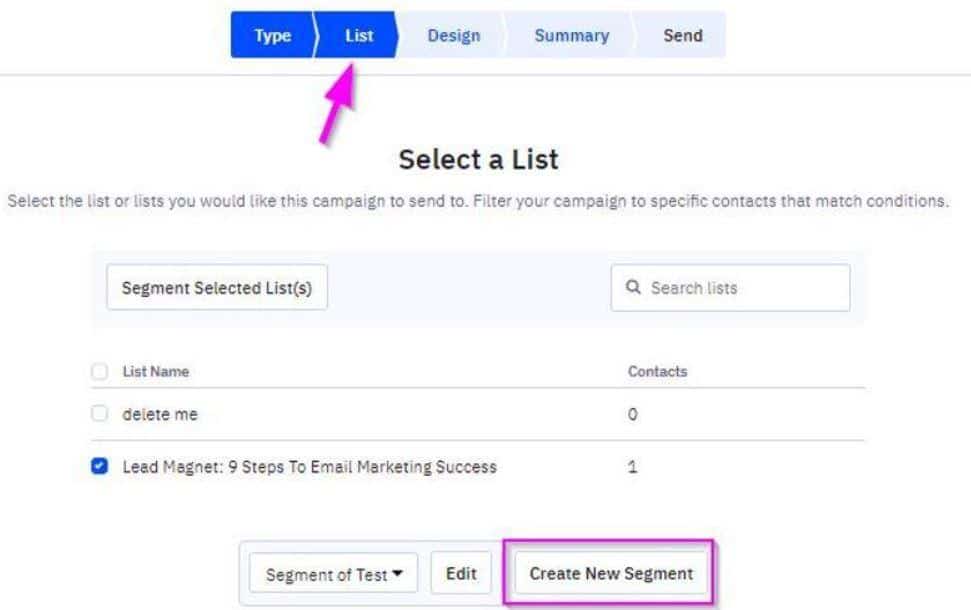
Automation
Mailerlite’s email marketing automation workflow is as simple as it can get. With Mailerlite’s automation sequence, you can:
Here’s what you’ll see as soon as you click on “Automations” on the left menu.
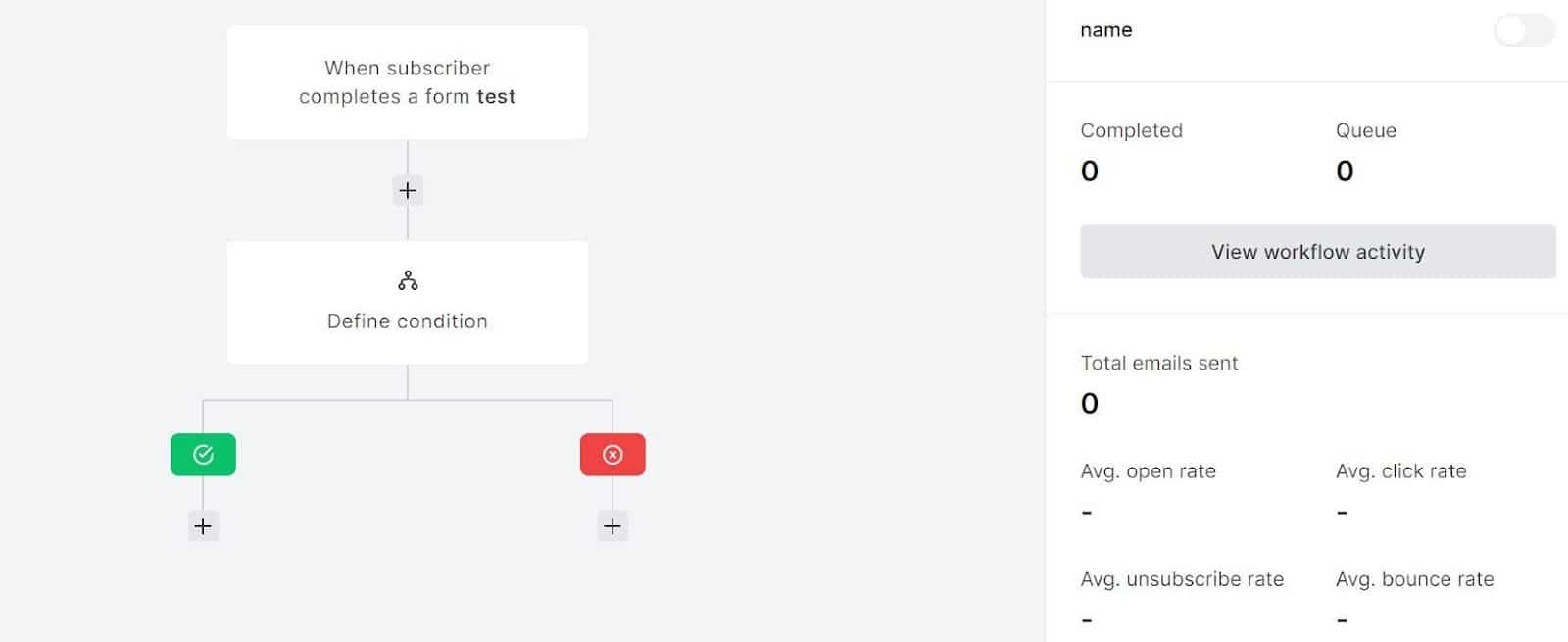
You’ll see four options as soon as you click the “+” icon.
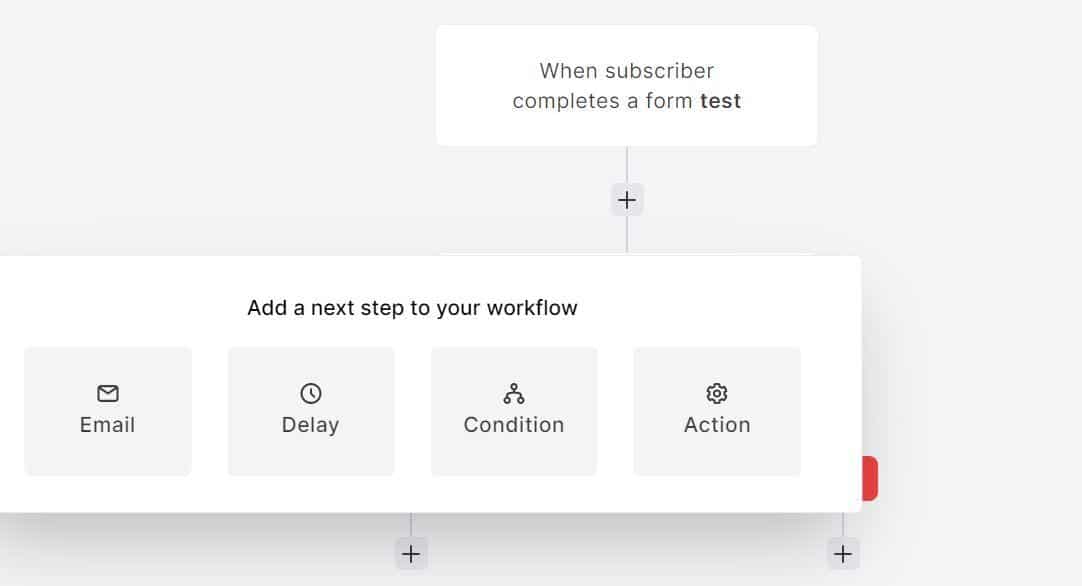
These are the triggers you can add to your workflow. A trigger is a pre-defined action someone takes to qualify for your workflow. For instance, you can set up a “Welcome” email trigger for people that have just subscribed to your newsletter. Impressively, Mailerlite lets you add multiple triggers, giving you more control over who gets into your workflow.
Note that the software doesn’t let you move your subscribers to another automation. Although you can move them to another group.
Forms and Landing Pages
Simplicity is what makes Mailerlite’s landing pages and forms so attractive. With its drag-and-drop editor, anyone with a basic design understanding can create converting landing pages. Mailerlite’s form builder is super easy to use as well.
You can create three types of forms with it:
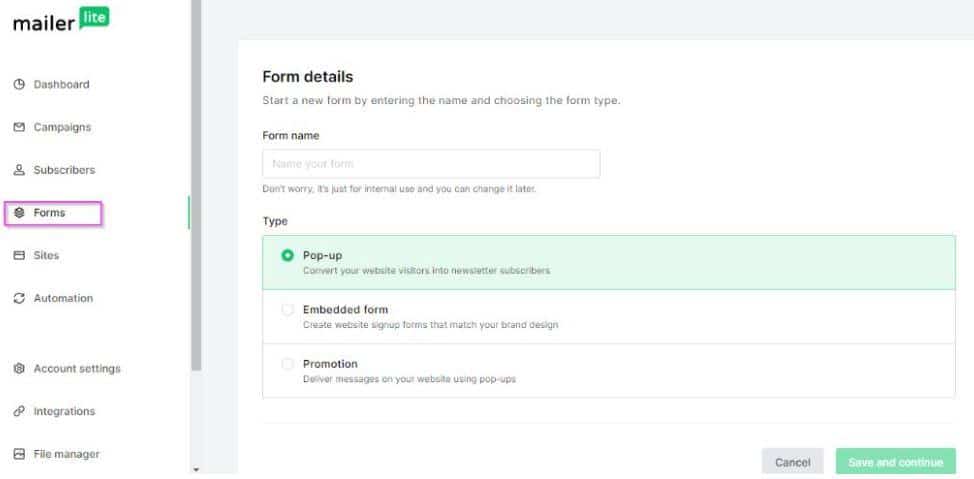
Now, pop-ups can be invasive, even annoying, so you don’t want to use them too often. The good thing is you can create embedded forms, which are a perfect way to capture leads on web pages.
As soon as you select a type of form, you’ll be asked to pick a template or start designing your form from scratch.

What’s more, you can create a landing page by going to “Site” and then “Landing page”.

You can start designing a landing page from the ground up, which is completely okay. However, it’s a good idea to look for a pre-built template that aligns with your goal. Since they are designed for conversions, picking a suitable template will eliminate most of the guesswork and speed up the process.
Note that you don’t get to use these templates on Mailerlite’s free plan.

You can, however, use these templates within the free trial period. Here’s what you’ll see after picking a landing page template:

A/B Testing
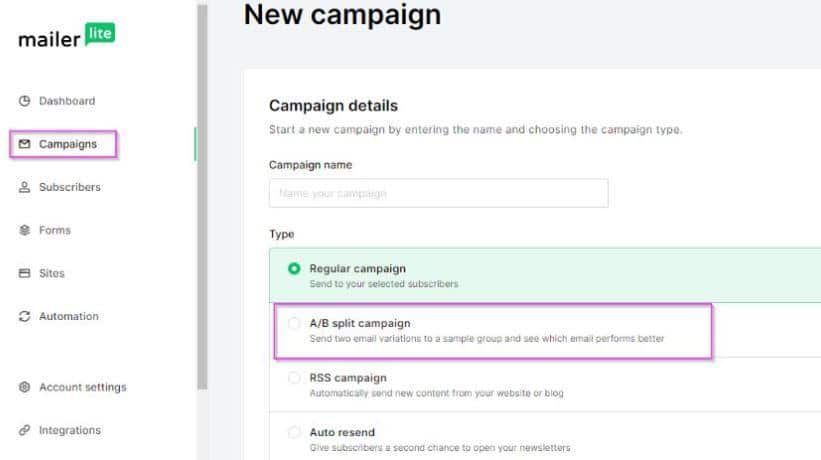
A/B testing or split testing helps you identify a better-performing variation of the same email. To do that, Mailerlite will send two variations of an email to the audience. Now, we saw that ConvertKit lets you A/B test only one aspect of your emails: Subject lines.
On the other hand, Mailerlite lets you test your:
So, if you think testing more variations can help you deliver better content to your audience, Mailerlite would be a clear winner here.
Marketing Analytics
Without marketing analytics, it can be hard to understand if your email marketing strategies are working or not. Now, we’ve seen that ConvertKit’s reporting is pretty basic. Mailerlite also seems to be following the same path.
On your dashboard, you can view the overview of how your campaigns have been performing.
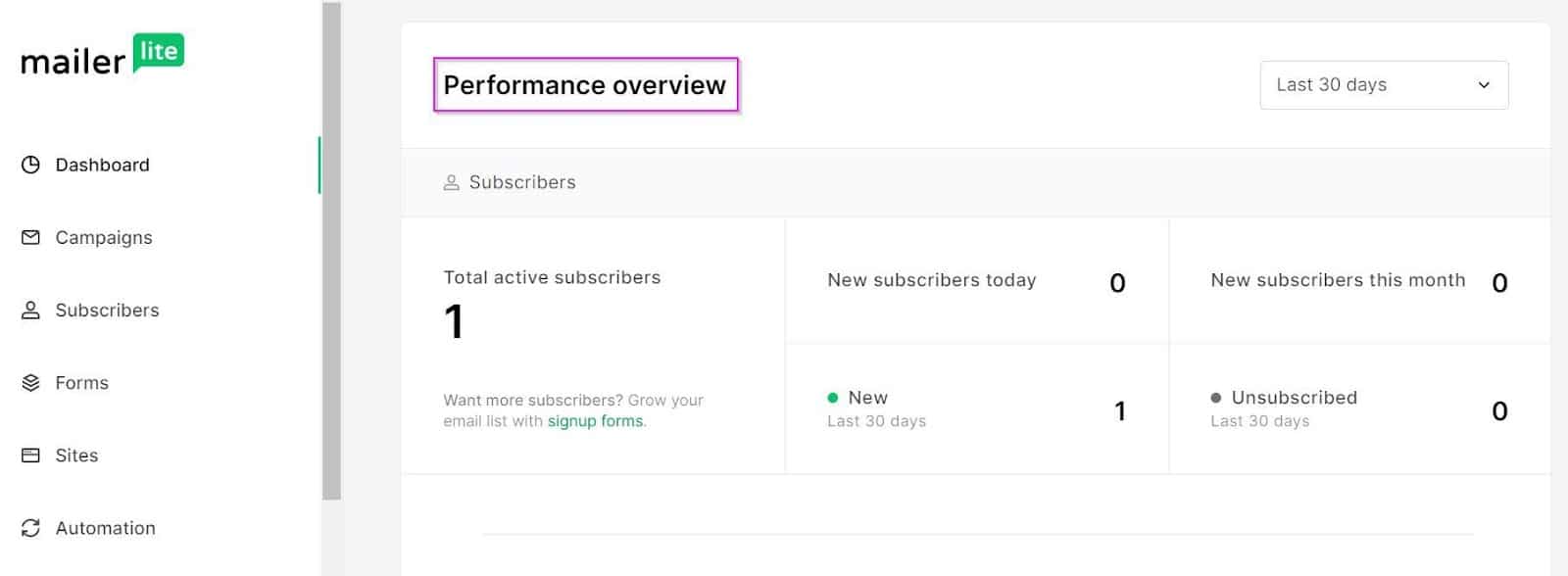
As you scroll down, you’ll see other analytics data:
Further down, you’ll be able to see data related to:
It’d be fair to say that both tools offer enough analytics or data to help you understand what’s working and what isn’t.
Integrations

In comparison to ConvertKit, Mailerlite does seem to be lacking a bit when it comes to third-party integrations. Having said that, you can always integrate your favorite third-party apps by using Zapier.
Verdict: ConvertKit vs. Mailerlite for Consulting Services
By now, you should have a good idea about how these tools can help you sell more consulting services. As far as user-friendliness is concerned, you might want to consider Mailerlite over ConvertKit. Plus, when you compare their prices, you’ll find Mailerlite to be a more cost-effective option. And, it offers more template designs as well as a more user-friendly landing page designer.
Overall, Mailerlite does seem to be a more cost-effective option than ConvertKit, particularly if you’re trying to grow your consulting business. Still not sure?
Choose ConvertKit if you:
Choose Mailerlite if you:
